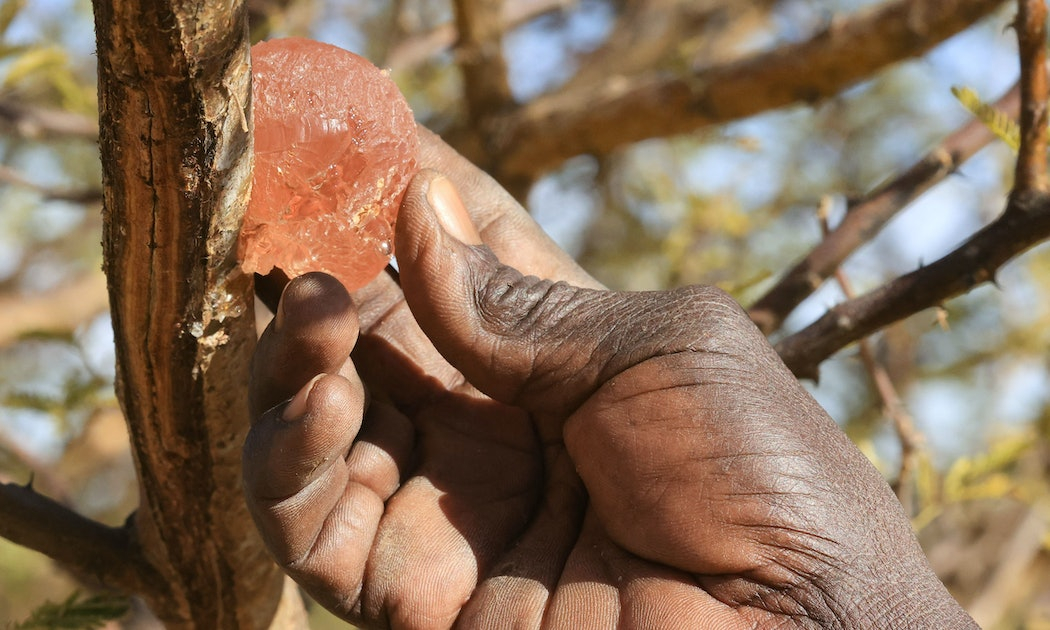
Gum arabic, also known as acacia gum, is a natural gum made of the hardened sap of various species of the acacia tree. Originally, gum arabic was collected from Acacia nilotica which was called the "Gum arabic tree"; in the present day, gum arabic is predominantly collected from two related species, namely Acacia senega and Vachellia (Acacia) seyal.
While acacia gum has been harvested in Arabia, Sudan, and West Asia since antiquity, sub-Saharan acacia gum has a long history as a prized export. The gum exported came from the band of acacia trees that once covered much of the Sahel region: the southern littoral of the Sahara Desert that runs from the Atlantic to the Red Sea. Today, the main populations of gum-producing Acacia species are harvested in Mauritania,Senegal, Mali, Burkina Faso, Niger, Nigeria, Chad, Cameroon, Sudan, Eritrea, Somalia, Ethiopia, Kenya and Tanzania.
Gum arabic's mixture of polysaccharides and glycoproteins gives it the properties of a glue and binder that is edible by humans. It remains an important ingredient in soft drink syrups, "hard" gummy candies such as gumdrops, marshmallows, M&M's chocolate candies—and edible glitter, a popular modern cake-decorating staple.
For artists, it is the traditional binder in watercolor paint, in photography for gum printing, and it is used as a binder in pyrotechnic compositions. Pharmaceutical drugs and cosmetics also use the gum as a binder, emulsifying agent, and a suspending or viscosity increasing agent. Wine makers have used gum arabic as a wine fining agent.
It is an important ingredient in shoe polish, and can be used in making homemade incense cones. It is also used as a lickable adhesive, for example on postage stamps, envelopes, and cigarette papers.



